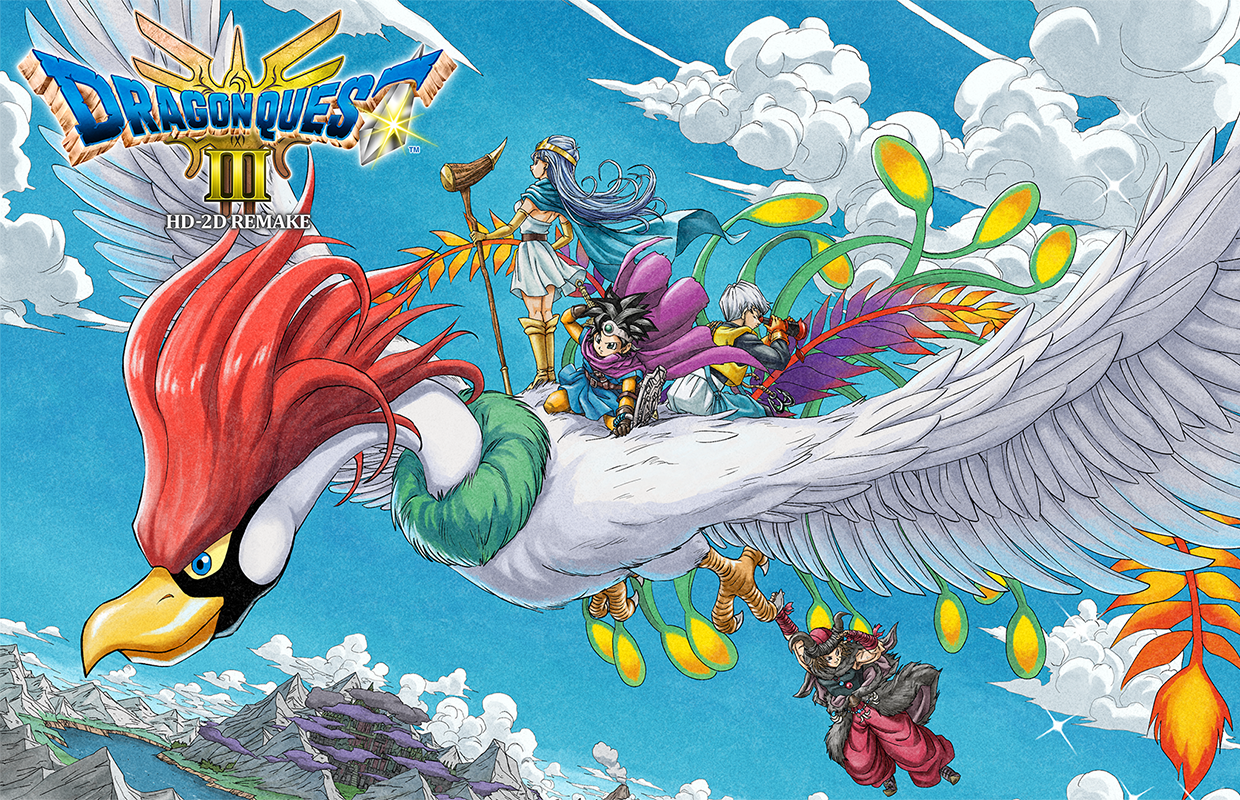
As a seasoned adventurer and a self-proclaimed connoisseur of all things Dragon Quest, I must say that this HD-2D remake of Dragon Quest III has truly taken me on an emotional rollercoaster ride. Growing up with the original trilogy, I can’t help but feel a sense of nostalgia and wonder as I journey through this beautifully reimagined world.
I didn’t particularly favor Dragon Quest III among the original Dragon Quest games, but it’s hard to deny its significance if you appreciate historical milestones in gaming. When I was playing through the series during a past quarantine, it seemed unique compared to its siblings on the NES. While I and II were working on establishing the foundations of early Japanese Role-Playing Games (JRPGs), III expanded the boundaries significantly. Because of its fame and iconic status, it has been remade multiple times, often based on the popular Super Famicom Remake. The current playable versions available are the mobile and Switch editions, but both felt slightly different in graphics or controls. Even so, after all these years, a new HD-2D remake of this classic game has finally been released that acknowledges its legacy.
In this tale, set during an intriguing period, it’s not overly complex or abstract. On the day when your main character reaches sixteen, the king assigns you an international quest to discover a method of vanquishing the Archfiend Baramos. Your father, Ortega – a renowned warrior – previously undertook the same mission but vanished without a trace. From now on, your journey becomes personal. Assemble a team of three companions, feel free to name them after friends or favorite anime characters, and set out to create a legacy for yourself.
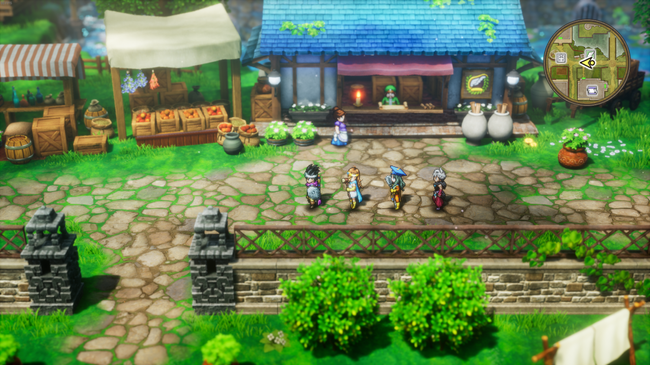
If you prefer role-playing games for their well-developed and talkative characters that significantly contribute to the storyline, you might find this particular game unsuitable. Dragon Quest III, being a classic RPG, retains its original style, which predates the evolution of deep characterization within the franchise. The characters in this game are primarily defined by their combat abilities rather than their dialogue or personalities. Interestingly, I can recall only one instance where they spoke – when the party member I named after my girlfriend chided me for viewing the Puff-Puff scene. Kudos to Dragon Quest for adding to my anxiety there! The story revolves around your party, primarily serving as a means to progress through your journey. As a player, you have a significant impact on the game world, but the characters themselves remain more focused on their roles in combat and exploration rather than being fully realized individuals. In essence, this is a gameplay-centric RPG.
Dragon Quest III presents itself as a game that appears quite linear initially, but its progressive expansion of freedom is truly beneficial. Initially, you’re confined to an island, but as the game progresses, it gradually expands your exploration capabilities until you can traverse the entire world via walking, boating, or flying. Each new town offers something to propel you further, whether it’s a new main quest, a direction to a cave for a valuable item, or a helpful tip from an NPC. With each new method of traversing the world, there’s always more to discover. Once you acquire your boat, most of the map becomes accessible, and the sense of freedom has been a standout feature of these classic Dragon Quest games. Convenient features like being able to Zoom directly from the Map screen keep gameplay brisk, minimizing downtime. You’re always engaged in something new within this game.
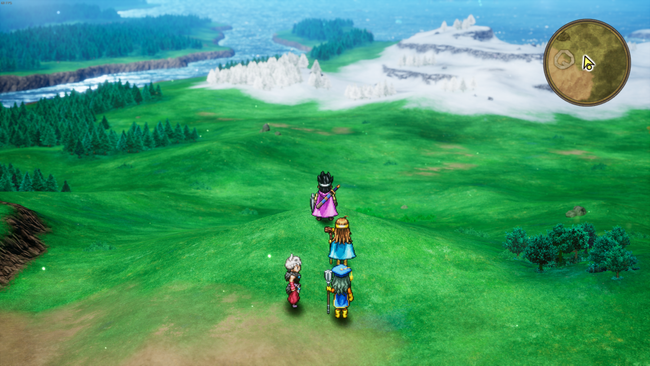
In essence, the fundamental mechanics of the game remain largely unaltered, and frankly, Dragon Quest III didn’t ask for too many additional features. Encounters can occur randomly on the world map or within dungeons, with battles taking place in turns. The graphical upgrade gives it a more vibrant feel than ever before, but the real joy comes from the split-second decision-making. The gameplay is relatively straightforward for most players, yet mastery of buffing and debuffing is soon required. Alternatively, one can choose to grind their way through, though I wouldn’t recommend that approach. However, the option for freedom is certainly there for those who prefer it. The HD-2D remake preserves the original design and structure, skillfully balancing the need to maintain the game’s classic style while appealing to a new player base.
The biggest new addition to the battle system is the introduction of a new vocation, the Monster Wrangler. Newly spread throughout the wide world of this remake are friendly monsters you can recruit, usable in the Monster Arena to compete for prizes. The Wrangler will gain new abilities at specific recruitment milestones, and honestly, these monster abilities feel wonderfully overpowered. I was worried about losing my Warrior to make room for this class, but those who put time into combing through the world to recruit monsters will have a really useful glass cannon. Their DPS was crucial for making it through the game’s hardest bosses.

In Dragon Quest III, there’s a job system that remains as straightforward as it was originally conceived. During my journey, I stumbled upon a remarkable place called Alltrades Abbey, which grants the ability to switch jobs for any party member except the Hero, provided they have reached level 20. Once reclassed, these characters retain all their abilities, but their levels drop to 1 and a half, with their stats being reduced proportionately. However, with the right equipment, it’s just a matter of time before they catch up with the rest of my team once more!
In Dragon Quest III, the only enhanced character class available is Sages, which are arguably the most powerful class in the game. While the job system adds a layer of customization, it would’ve been great if they had expanded this feature to allow for multiple classes for your Hero or introduce new advanced classes. Although these additions weren’t necessary and keeping the system as is was likely a smart choice, it would have been enjoyable to see such features return since we haven’t seen Vocations since Dragon Quest X before it was unlocalized.
In the updated version of the game, there are many noticeable alterations, yet one major shift stands out: the game now automatically saves after every fight, enabling players to resume from their previous autosave when their team is defeated. Previously in Dragon Quest games, death meant being transported back to the last town while retaining all your earned experience and half of your money. This setup allowed for repeated attempts on challenging sections, with each try bringing incremental improvement. For those who prefer a traditional gaming experience, this classic approach can still be chosen.
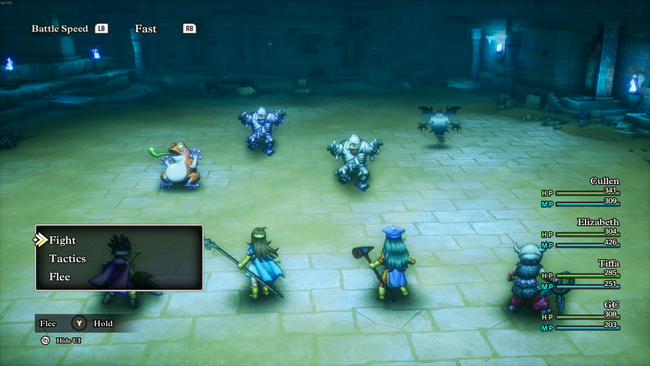
In essence, the complexity hidden within its simplicity is what makes the game’s battle system appealing, but it’s not the main draw for a game like Dragon Quest III. What truly captivates me is the opportunity to traverse a world mirroring our own, and the chance to create my own legacy. Primarily, I am drawn to the experience of exploring a vast and stunning world. The thrill is in plundering tombs, growing stronger, and assisting those in distress. Witnessing the sun rise and set as my character journeys through this world, making mental notes about the surroundings and planning my next move, brings me immense joy. Remarkably, the structure of your adventure in this NES game is more intricate than one might expect. Whenever I revisit Dragon Quest III, I am consistently impressed by its design.
During your adventure, you’ll discover several bonus scenes that enrich Ortega’s tale. One particularly heartwarming moment is when you return his helmet to your mother, prompting her to share its history with you. In truth, each conversation with your Mom is among the most compelling parts of the game. Dragon Quest III skillfully portrayed human moments, often through resolutions in its numerous mini-stories scattered throughout the world. These stories ranged from finding star-crossed lovers, reuniting lost souls, to unmasking a town’s deception. At the heart of each plot is a relatable motivation, no matter how small. The new scenes seem like thoughtful additions that enhance what made the original game’s story compelling. I can’t help but wish there was more voice acting compared to previous HD-2D projects.
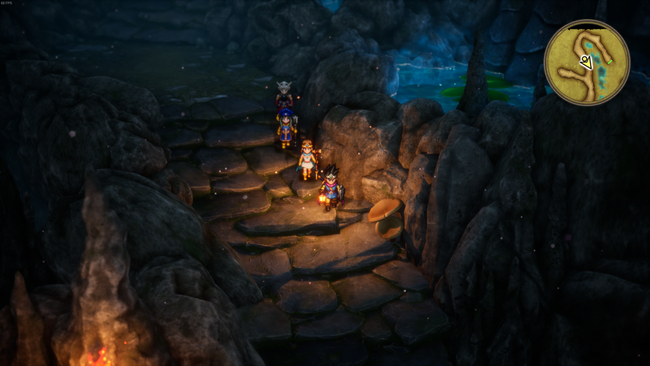
Restating a remake as “loyal” can sometimes spark strong reactions among diehard fans when their beloved game is due for an update. These enthusiasts tend to scrutinize any changes or additions made during the remaking process, making it challenging for creators to stay true to the original work without criticism. It’s essential to understand that a remake can never fully replicate the experience of the original. Personally, I don’t mind if a remake chooses to venture off on its own path, as I view it more as an extension rather than a replacement of the original creation. However, I was taken aback by how much of the authentic experience remained intact in this HD-2D remake. While some efforts have been made to simplify progression by guiding players during certain exploration phases, these hints primarily suggest the general direction one should take, rather than providing explicit instructions.
As Dragon Quest moved into 3D, there was a focus on making each location appear authentic. Buildings took on a lived-in feel, dungeons became more detailed, and the entire world felt tangible. This remake has successfully incorporated modern map design elements back into Dragon Quest III, resulting in a visually striking game. It’s undeniably the most beautiful title in the HD-2D series, and every location seems suitably inhabited now. On the other hand, dungeons seem even more ominous and desolate than before, amplifying the tension during late-game exploration. The overworld map strikes a nice balance between the original era of Dragon Quest III and the current one. The expanded world has been beautifully realized, but enough abstract elements remain to preserve the classic RPG’s identity.
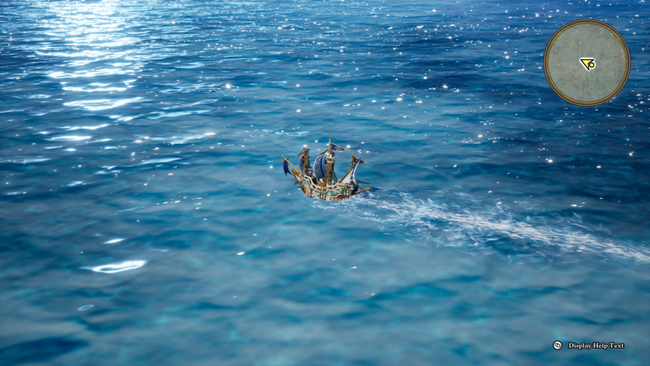
I’ve been alternating between my PC and Steam Deck to play the Steam edition of the game. The port is relatively basic with minimal graphic customization options, yet it looks and performs flawlessly. Remarkably, there haven’t been any technical problems while playing on the Steam Deck, making it my preferred platform for this game. By setting the game to 720p at max settings, I was able to maintain a consistent 60 FPS. When docked on my TV, I achieved similar results running at 1080p. Unfortunately, higher frame rates aren’t offered in the PC version, but considering it could run smoothly even on Switch at 30 FPS, I’d likely be content with that.
In essence, this remake closely follows the Super Famicom version, except for the Pachisi minigame. You traverse identical dungeons, encounter similar plot points, and engage in battles with both familiar and novel monsters. The scale of the world sets it apart, as the map seems vast, and the dungeons appear formidable, yet never feel overly bloated. It appears the designers aimed to expand upon the original game, without overstepping its boundaries. If anything, additional elements such as new bosses scattered throughout the mandatory story dungeons that were previously missing, serve to elevate the overall experience in my opinion.
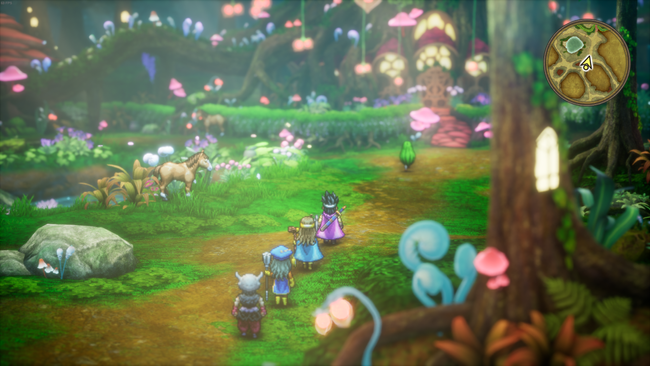
In this updated version, subtle improvements have been made to polish the timeless game design, ensuring it sparkles even brighter. The script has also been adjusted thoughtfully, making the narrative more accessible for new players without straying too far from its straightforward charm. The game now seems more streamlined with a clearer grasp of what sets Dragon Quest III apart. New Secret Spots scattered across the map offer extra loot and recruitable creatures, encouraging players to delve deeper into the world, a clever way to maintain the spirit of adventure in a world no longer bound by a top-down view and basic tile layouts.
Something I respect immensely is how the developers give the players the freedom to choose how much of the original experience they want. The appeal of early Dragon Quest games, in my opinion, is how they evoke wanderlust. You feel as if you’re traveling across a sprawling and unknown world, with every landmark or town being a chance for new adventures. This can lead to them being obtuse to many, and an attempt was made to make it a bit more newcomer-friendly. In the menu is an option to turn on or off objective markers, previously seen in the HD-2D remake of Live A Live. I played the entire game with objective markers off and my objective list hidden. This offered me an experience that still felt plenty open, while sanding off the frustrating edges of the obtuse design. All that’s left are the charming parts, and I couldn’t get enough of it.
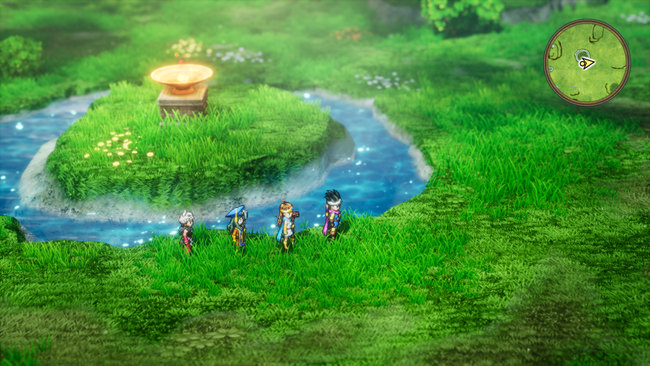
What strikes me most about this reboot is my overwhelming enthusiasm for the team’s interpretation of Dragon Quest II. Among the original trilogy, this game has always held a special place in my heart. It seemed like an early blueprint for III that didn’t fully take flight, but it captured the essence wonderfully. If they manage to expand its scope, flesh out the narrative, and make navigation a bit smoother, Dragon Quest II could potentially become a standout game in the series. While it might be hopeful thinking, the remake has certainly sparked optimism within me for the upcoming remakes of I and II next year.
My second takeaway was a newfound appreciation for this classic game. Dragon Quest III is one of the most important games of all time. Anyone savvy with Google could tell you this. RPGs have come a really long way, but DQIII has always felt a bit ahead of its time. Artdink has done a truly impressive job trying to preserve it as it was, and this HD-2D remake is a fascinating time capsule of one of the RPG genre’s first breakout successes. So much of the spirit is intact in all its retro glory, but the increase in scale and presentation makes it stand out amongst modern contemporaries. After a while, I stopped trying to look out for various changes, and just started enjoying replaying Dragon Quest III. All of the adventure, the exciting battles, and nostalgia are here. The moments of frustration and triumph I yearn for every time I come back to this game are preserved. This is Dragon Quest III, plain and simple. It felt like coming home.
9
Versions tested: Steam
Read More
- SUI PREDICTION. SUI cryptocurrency
- „People who loved Dishonored and Prey are going to feel very at home.” Arkane veteran sparks appetite for new, untitled RPG
- LDO PREDICTION. LDO cryptocurrency
- Destiny 2: A Closer Look at the Proposed In-Game Mailbox System
- Clash Royale Deck Discussion: Strategies and Sentiments from the Community
- Jennifer Love Hewitt Made a Christmas Movie to Help Process Her Grief
- ICP PREDICTION. ICP cryptocurrency
- Naughty Dog’s Intergalactic Was Inspired By Akira And Cowboy Bebop
- Critics Share Concerns Over Suicide Squad’s DLC Choices: Joker, Lawless, and Mrs. Freeze
- EUR IDR PREDICTION
2024-11-13 18:26